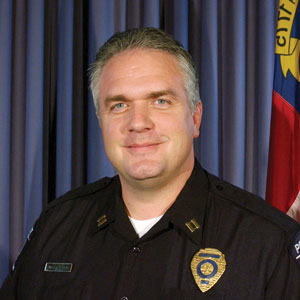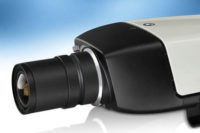
|
|
Major Eddie Levins is the commander of the Administrative Services Bureau, which includes Communications, Records and Court Services for the Charlotte-Mecklenburg Police Department. |
As the trend of non-response ordinances across the country continues to spread, so is a counter-measure that ensures police dispatch to locations where an alarm is verified. Earlier this year, the Boston Police Department put in place a new policy designating exclusive priority codes for video-verified intrusion alarms. And in North Carolina, for the past two years, the Charlotte-Mecklenburg Police Department has worked on implementing a policy of its own that assigns video verified alarms a “priority one” dispatch, labeling them “crimes in progress.”
What is interesting about this policy is that it bypasses the department’s false alarm reduction ordinance. The ordinance states that in order to warrant police dispatch, all residences and businesses with security alarms must hold a permit — renewed every year — that can be suspended after police responds to a number of false alarms. After “three strikes,” each false alarm incurs a progressively higher fine, which must be paid in order to reinstate a permit. With or without a permit, hold up alarms, panic alarms and duress alarms coming from a monitoring company are entered for dispatch, but only video verified alarms are entered as priority one calls.
“We have to have evidence that it is a crime in progress. We would not respond the same way unless there was video to verify,”said Major Eddie Levins, commander of the Administrative Services Bureau, Charlotte-Mecklenburg Police Department. “If there’s an immediate risk of loss — where there’s a crime in progress — we respond immediately, even if you’re on the cut-off list.”
The alarm policy states that, “any calls where the alarm monitoring company has actual live streaming video of subjects in the premise or on the perimeter as a Breaking and Entering call to residence or business.”
Major Levins estimates that since implementing priority response for video verified alarms, arrest rates may have gone up as much 50 percent for video-verified alarms. This is due, he notes, not only to the fact that responding officers know they are going into a crime in progress, which changes the way they approach the call and makes them more vigilant, but also due to advantages gained from knowing how many perpetrators they are looking for and where, whether they are armed and even what they’re looking for. “They’re looking for more — seeing more,” he says.
At the Electronic Security Expo held in Charlotte, N.C. this month, Levins spoke during an educational session about the evolution of 911 response. He explains that issues affecting response go beyond false alarms. A crash on the interstate for example, he says, can overload a 911 call system and takes someone else’s ability to access emergency response. The evolution of 911 centers, he says, will lead to different ways of communicating need for dispatch that can include video as well as still images.
As far as the growing spotlight on the relationship between police departments and security companies, Levins says that, “Everybody understands their role now.” He adds that the biggest change has been that currently everyone can work together in trying to apprehend criminals. He attributes this in part to non-response ordinances that are letting both alarm owners and security companies know that false alarms are a huge drain on police resources. “[Police] can’t be a personal security guard to every person with an alarm,” he comments. “It seems punitive to charge people for false alarms, but people have to take some individual responsibility. They have to do their part, too.”



